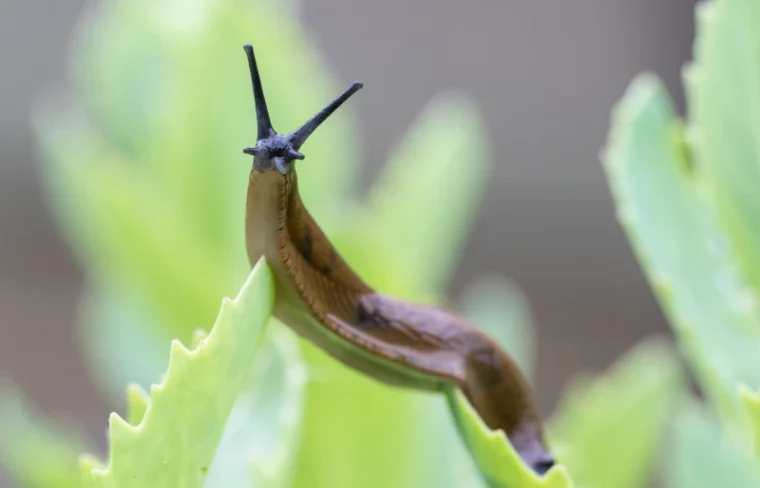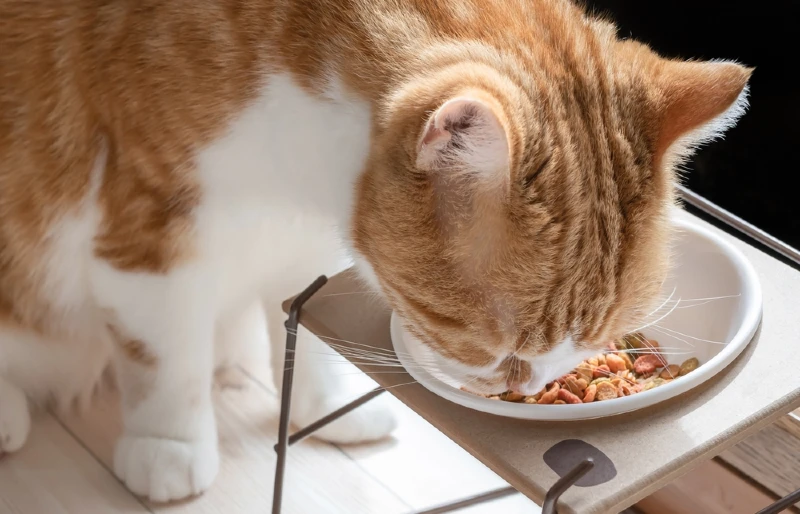
[ad_1]

There’s little more disturbing than seeing slugs slithering toward your cat’s food bowl, and it can leave you wondering what to do about it. Slug pellets aren’t a good idea because your cat could eat them and get very sick, so deterring the slugs with humane, non-toxic methods is the best course of action.
Fortunately, there are plenty of things you can try, so let’s get stuck in.

The 7 Tips to Keep Slugs Away from Cat Food
1. Feed Your Cat Indoors
If your cat is fed outside, it might be time to reconsider bringing your cat back inside at mealtimes to keep their food and water in as hygienic a condition as possible. If this isn’t an option, try one of the alternatives below.
2. Elevate the Food

Elevating your cat’s food bowl is one of the simplest ways to prevent slugs from getting inside. You can use whatever you have at home to rest the bowl on or invest in an elevated food bowl. Another idea is to place the food bowl on a table and have your cat jump up to get to it.
3. Create a Barrier
You can protect your cat’s food bowls by building a barrier with one of many materials to keep slugs away. One option that has been suggested is to use copper wire because this potentially gives slugs a minor shock that will send them slithering in the other direction, though the truth to this has been questioned. Alternatively, you could try clean, dry eggshells (residue could end up attracting the slugs) or seaweed which are also anecdotally said to repel slugs. Just make sure that whatever you use to make your barrier is not toxic to cats.
4. Feed Dry Food

Slugs are likely more attracted to wet food, so if you have to feed your cat outdoors, consider feeding a dry formula instead. This may not completely solve the problem, but it could help minimize the attraction for slugs.
5. Cover the Bowl
Some people cover their cats’ food bowls with an item like a plant pot to keep those slimy food fiends at bay. You’ll need to remove the cover to let your cat eat later, though, so it may be best to take the food away when your cat has finished.
6. Clean the Area Thoroughly

When your cat has finished eating, remove any leftover food and clean any mess that’s been left behind so slugs don’t feel tempted to keep coming back to the area. Even a few morsels could have slugs coming back for more, so be thorough.
7. Place Slug-Deterring Plants in the Area
If your cat’s bowl is outside, you can try planting some potentially slug-repelling plants nearby. Options include rosemary and thyme. Just be careful not to put any cat-toxic plants close to your cat’s food in case they decide to have a nibble.

Are Slugs Toxic to Cats?

Slugs alone are not toxic to cats (though eating one might cause a tummy upset), but they can be if your cat eats a slug that has consumed insecticide. This can cause toxicity, resulting in signs like drooling, vomiting, incoordination, breathing issues, diarrhea, and twitching, which can lead to progressive deterioration.
In addition, in some parts of the world, slugs sometimes carry lungworm parasites, which could infect your cat. Lungworm infections can range from mild to severe, and kittens, older cats, and cats that are already unwell are especially vulnerable to getting a severe infection.
Signs of lungworm range from no observable signs, to coughing and shortness of breath. Please contact a vet if you spot any of these signs, or have concerns that your cat may have eaten slugs, and potentially be infected by lungworm.

Final Thoughts
With a few simple changes, you can keep slugs away from your cat’s food bowls for good. This is important not only for preventing slugs from stealing your cat’s food or grossing out your cat by making themselves at home in the bowl but also because slugs can be harmful to cats if they’re carrying insecticides or parasites.
Featured Image Credit: Patric Froidevaux, Shutterstock
[ad_2]
Source link


